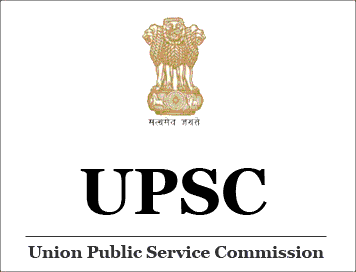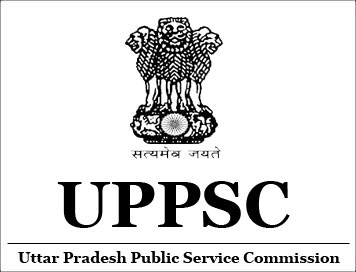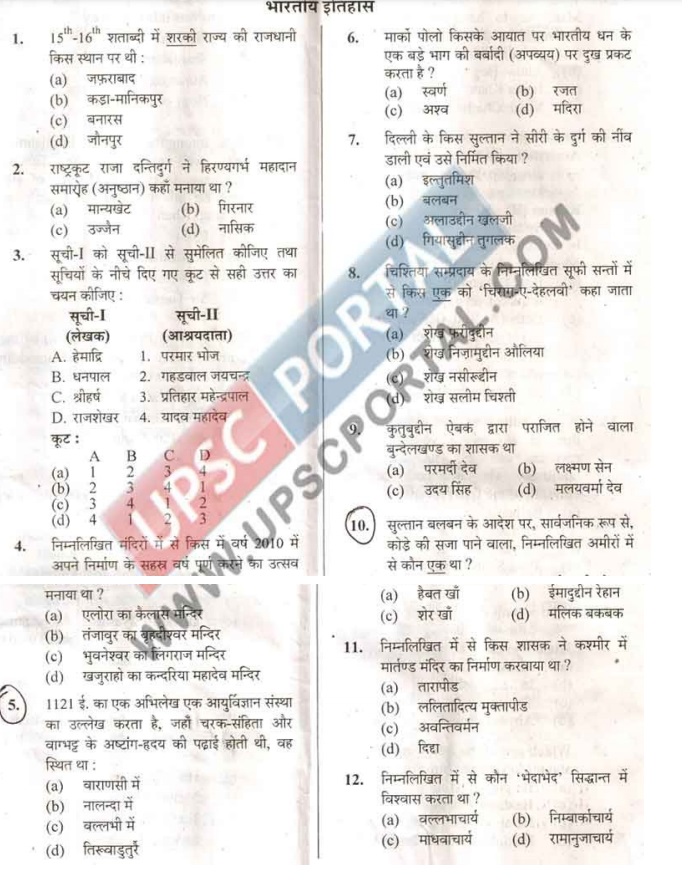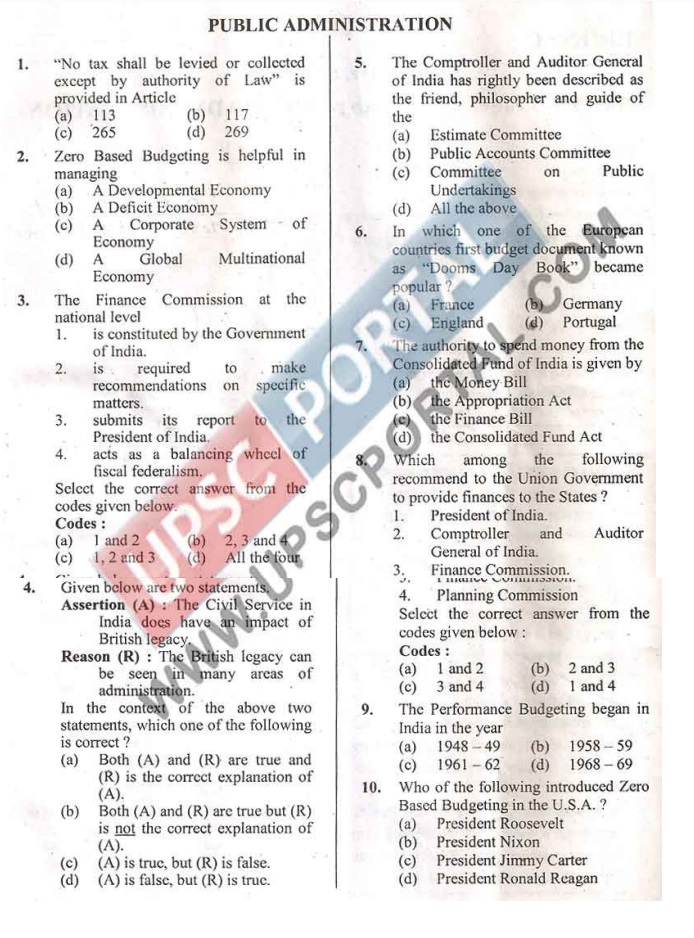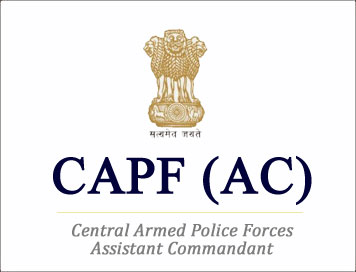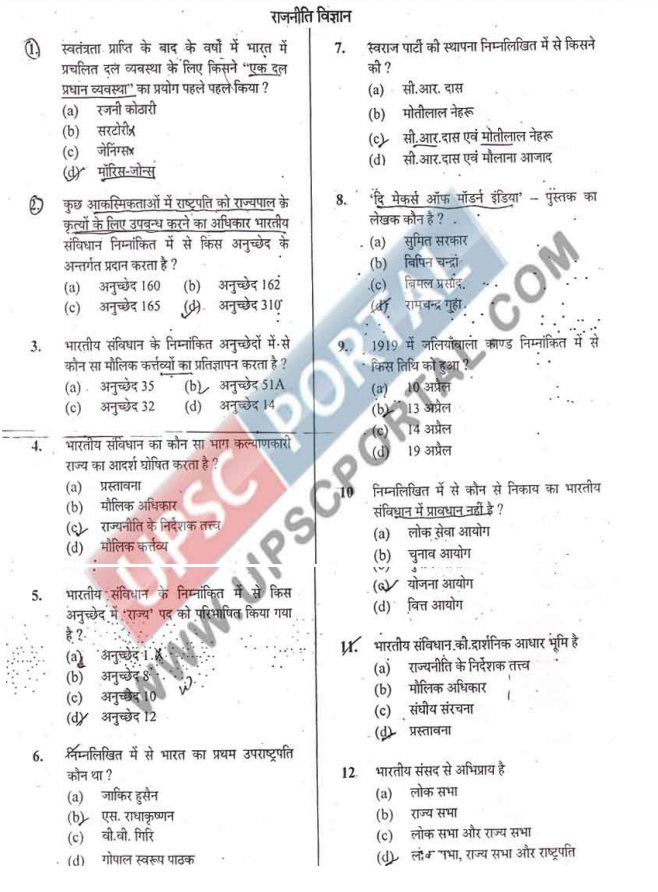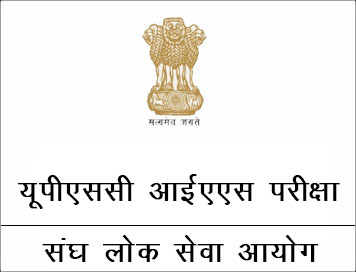
संघ लोक सेवा आयोग सिविल सेवा - मुख्य परीक्षा
(Download) UPSC Mains 2019 General Studies Question Paper:
सामान्य अध्ययन-IV (नीति,अखंडता एवं अभिक्षमता)
-
Exam Name: UPSC IAS Mains General Studies (सामान्य अध्ययन-4) (Paper-4)
-
Year: 2019
Q.1-
- सार्वजनिक जीवन के आधारित सिद्धांत क्या हैं? इन में से किन्हीं तीन सिद्धांतों को उपयुक्त उदाहरणों के साथ स्पष्ट कीजिए।
- लोक सेवक शब्द से आप क्या समझते है? लोक सेवक की प्रत्याशित भूमिका पर विचार कीजिए।
Q.2-
- लोक निधियों का प्रभावी उपयोग विकास के लक्ष्यों को प्राप्त करने हेतु निर्णायक है। लोक निधियों के अल्प उपयोग एवं दुरूपयोग के कारणों का समालोचनात्मक परीक्षण करते हुए उनके निहितार्थो की समीक्षा कीजिए।
- लोक सेवक द्वारा अपने कर्तव्य का अनिष्पादन भ्रष्टाचार का एक रूप है। क्या आप इस विचार से सहमत हैं? अपने उत्तर की तर्कसंगत व्याख्या करें।
Q.3-
- सांविधानिक नैतिकता से आप क्या समझते हैं? सांविधानिक नैतिकता का अनुरक्षण कोई किस प्रकार करता है?
- अन्तःकरण का संकट का क्या अभिप्राय है? सार्वजनिक अधिकारक्षेत्र में यह किस प्रकार अभिव्यक्त होता है?
Q.4-
- नागरिकों के अधिकारपत्र (चार्टर) आंदोलन के मूलभूत सिद्धांतों को स्पष्ट कीजिए और उसके महत्व को उजागर कीजिए।
- एक विचार यह है कि शासकीय गुप्त बात अधिनियम सूचना के अधिकार अधिनियम के क्रियान्वयन में एक बाधा है। क्या आप इस विचार से सहमत हैं? विवेचना कीजिए।
Q.5-
- शासन में सत्यनिष्ठा से आप क्या समझते हैं? इस शब्द की आपकी अपनी समझ के आधार पर, सरकार में सत्यनिष्ठा को सुनिश्चित करने के उपाय सुझाइए।
- संवेगात्मक बुद्धि आपके अपने संवेदों से आपके विरूद्ध कार्य करने के बजाय आपके लिए कार्य करवाने का सामर्थ्य है। क्या आप इस विचार से सहमत हैं? विवेचना कीजिए।
Q.6- निम्नलिखित में से प्रत्येक उद्धरण के आपके लिए क्या मायने हैं?
- एक अपरीक्षित जीवन जीने योग्य नहीं है। सुकरात
- व्यक्ति और कुछ नहीं केवल अपने विचारों का उत्पाद होता है। वह जो सोचता है वही बन जाता है। एम.के.गांधी
- जहाँ ह्रदय में शुचिता है, वहाँ चरित्र में सुन्दरता है। जब चरित्र में सौन्दर्य है, तब घर में समरसता है। जब घ्रर में समरसता है, तब राष्ट्र में सुव्यवस्था है। जब राष्ट्र में सुव्यवस्था है, तब विश्व में शांति है। ए.पी.जे. अब्दुल कलाम
Q.7- गंभीर प्राकृतिक आपदा से प्रभावित एक क्षेत्र में आप बचाव कार्य का नेतृत्व कर रहे हैं। हजारों लोग बेघर हो गए हैं और भोजन, पेयजल और अन्य मूलभूत सुविधाओं से वंचित हो गए हैं। मूसलाधार वर्षा एवं आपूर्ति मार्गों के क्षतिग्रस्त होने से बचाव कार्य बाधित हो गया है। विलम्बित और सीमित राहत कार्य से स्थानीय लोग बहुत क्रोधित हैं। जब आपका दल प्रभावित क्षेत्र में पहुँचता है, तब लोग दल के कुछ सदस्यों पर हमला बोल देते हैं यहाँ तक कि उनकी पिटाई भी कर देते हैं। आपके दल का एक सदस्य गंभीर रूप से घायल भी हो जाता है। संकट की इस स्थिति में, दल के कुछ सदस्य अपने जीवन को खतरे के डर से आपसे आग्रह करते है कि बचाव कार्य रोक दिया जाए।
Q.8- ईमानदारी और सच्चाई एक सिविल सेवक के प्रामाणक हैं। इन गुणों से युक्त सिविल सेवक किसी भी सुदृढ़ संगठन के मेरूदंड माने जाते हैं। कर्तव्य निर्वहन के दौरान, वे विभिन्न निर्णय लेते हैं। कभी-कभी इनमें से कुछ निर्णय सद्भाविक भूल बन जाते हैं। जब तक ऐसे निर्णय जानबूझ कर नहीं लिए जाते हैं और व्यक्तिगत लाभ प्रदान नहीं करते, तब तक अधिकारी को दोषी नहीं कहा जा सकता है। यद्यपि कभी-कभी ऐसे निर्णयों के दीर्घावधि में अप्रत्याशित प्रतिकूल परिणाम उत्पन्न हो सकते हैं।
अभी हाल में कुछ ऐसे उदाहरण सामने आए हैं जिन में सिविल सेवकों को सद्भाविक भूलों के लिए आलिप्त किया गया है। उन्हें अकसर अभियोजित और बंदित भी किया गया है। इन प्रकरणों के कारण सिविल सेवकों की नैतिक रचना को अत्यधिक क्षति पहुंची है।
यह प्रवृति लोक सेवकों के कार्य निष्पादन को किसा तरह प्रभावित कर रही है? यह सुनिश्चित करने के लिए कि ईमानदार सिविल सेवक सद्भाविक भूलों के लिए आलिप्त नहीं किए जाए, क्या उपाय किए जा सकते हैं? तर्कसंगत उत्तर दीजिए।
Q.9- बड़ी संख्या में महिला कर्मचारियों वाली एक परिधान उत्पादक कंपनी के अनेक कारणों से विक्रय में गिरावट आ रही थी। कंपनी ने एक प्रतिष्ठित विपणन अधिकारी को नियुक्त किया, जिसने अल्पावधि में ही विक्रय की मात्र को बढ़ा दिया। लेकिन उस अधिकारी के विरूद्ध कार्यस्थल पर यौन उत्पीड़न में लिप्त होने के कुछ अपुष्ट शिकायतें सामने आई।
कुछ समय पश्चात् एक महिला कर्मचारी ने कंपनी के प्रबंधन की विपणन अधिकारी के विरूद्ध यौन उत्पीड़न की औपचारिक शिकायत दायर की। अपनी शिकायत के प्रति कंपनी की संज्ञान लेने में उदासीनता को देखते हुए, महिला कर्मी ने पुलिस में प्राथमिकी दर्ज की।
परिस्थिति की संवेदनशीलता और गंभीरता को भांपते हुए, कंपनी ने महिलाकर्मी को वार्ता करने के लिए बुलाया। कंपनी ने महिलाकर्मी को एक मोटी रकम देने के एवज में अपनी शिकायत और प्राथमिकी वापस लेने तथा यह लिख कर देने के लिए कहा कि विपणन अधिकारी प्रकरण में लिप्त नहीं था।
इस प्रकारण में निहित नैतिक मुद्दों की पहचान कीजिए। महिलाकर्मी के सामने कौन-कौन से विकल्प उपलब्ध हैं?
Q.10- आधुनिक लोकतांत्रिक राज्य व्यवस्था में, राजनीतिक कार्यपालिका और स्थायी कार्यपालिका की संकल्पना होती है। निर्वाचित जन प्रतिनिधि राजनीतिक कार्यपालिका का गठन करते हैं और अधिकारीतंत्र स्थायी कार्यपालिका का गठन करती है। मंत्रीगण नीति निर्माण करते हैं और अधिकारी उन नीतियों को क्रियान्वित करते हैं।
स्वतंत्रता के पश्चात् प्रारंभिक दशकों में, राजनीतिक कार्यपालिका और स्थायी कार्यपालिका के बीच अंतर्सम्बन्ध, एक दूसरे के क्षेत्र में हस्तक्षेप किए बिना, परस्पर समझना, सम्मान और सहयोग पर आधारित थे।
लेकिन बाद के दशकों में स्थिति में परिवर्तन आया है। ऐसे प्रकरण आए हैं जहाँ राजनीतिक कार्यपालिका ने स्थायी कार्यपालिका पर अपनी कार्यसूची का अनुसरण करने का दबाव बनाया है। सत्यनिष्ठ अधिकारियों के प्रति सम्मान और सराहना में गिरावट आई है। इस प्रवृत्ति में उत्तरोतर वृद्धि हुई है कि राजनीतिक कार्यपालिका में नैत्यिक प्रशासनिक प्रसंगों में जैसे कि स्थानान्तरण, प्रस्थापन आदि में अंतर्ग्रस्त होने की प्रवृत्ति बढ़ती जा रही है। इस परिदृश्य में अधिकारीतंत्र के राजनीतिकरण की ओर एक निश्चित प्रवृति है। सामाजिक जीवन में बढ़ती भौतिकवाद और संग्रहवृति ने राजनीतिक कार्यपालिका और स्थायी कार्यपालिका पर प्रतिकूल प्रभाव डाला है।
अधिकारीतंत्र के इस राजनीतिकरण के क्या-क्या परिणाम हैं? विवेचना कीजिए।
Q.11- एक सीमांत राज्य के एक जिले में स्वापकों (नशीले पदार्थों) का खतरा अनियंत्रित हो गया है। इसके परिणामस्वरूप काले धन का प्रचलन, पोस्त की खेती में वृद्धि, हथियारों की तस्करी, व्यापक हो गई है तथा शिक्षा व्यवस्था लगभग ठप्प हो गई है। सम्पूर्ण व्यवस्था एक प्रकार से समाप्ति के कगार पर है। इन अपुष्ट खबरों से कि स्थानीय राजनेता और कुछ पुलिस उच्चाधिकारी भी ड्रग माफिया को गुप्त संरक्षण दे रहे हैं, स्थिति और भी बदतर हो गई है। ऐसे, समय में परिस्थिति को सामान्य करने के लिए, एक महिला पुलिस अधिकारी, जो ऐसी परिस्थितियों से निपटने के लिए अपने कौशल के लिए जानी जाती है, को पुलिस अधीक्षक के पद पर नियुक्त किया जाता है।
यदि आप वही पुलिस अधिकारी हैं, तो संकट के विभिन्न आयामों को चिन्हित कीजिए। अपनी समझ के अनुसार, संकट का सामना करने के उपाय भी सुझाएं।
Q.12- भारत में हाल के समय में बढ़ती चिंता रही है कि प्रभावी सिविल सेवा नैतिकता, आचरण संहिताओं, पारदर्शिता उपायों, नैतिक एवं शुचिता व्यवस्थाओं को भ्रष्टाचार निरोधी अभिकरणों को विकसित किया जा सके। इस परिप्रेक्ष्य में, तीन विशिष्ट क्षेत्रें पर ध्यान देने की आवश्यकता को महसूस किया जा रहा है जो सिविल सेवाओं में शुचिता और नैतिकता को आत्मसात् करने हेतु प्रत्यक्ष रूप से प्रासंगिक हैं। ये क्षेत्र निम्नलिखित हैं:
- सिविल सेवाओं में, नैतिक मानकों और ईमानदारी के विशिष्ट खतरों का पूर्वानुमान करना,
- सिविल सेवकों की नैतिक सक्षमता को सशक्त करना और
- सिविल सेवाओं में नैतिक मूल्यों और ईमानदारी की अभिवृद्धि के लिए, प्रशासनिक प्रक्रियाओं एवं प्रथाओं का विकास करना।
उपरोक्त तीन मुद्दों का हल निकालने के लिए संस्थागत उपाय सुझाइए।

NEW! UPSC, IAS परीक्षा संपूर्ण अध्ययन सामग्री (प्रारंभिक, मुख्य, साक्षात्कार COMBO) - Hindi Medium






